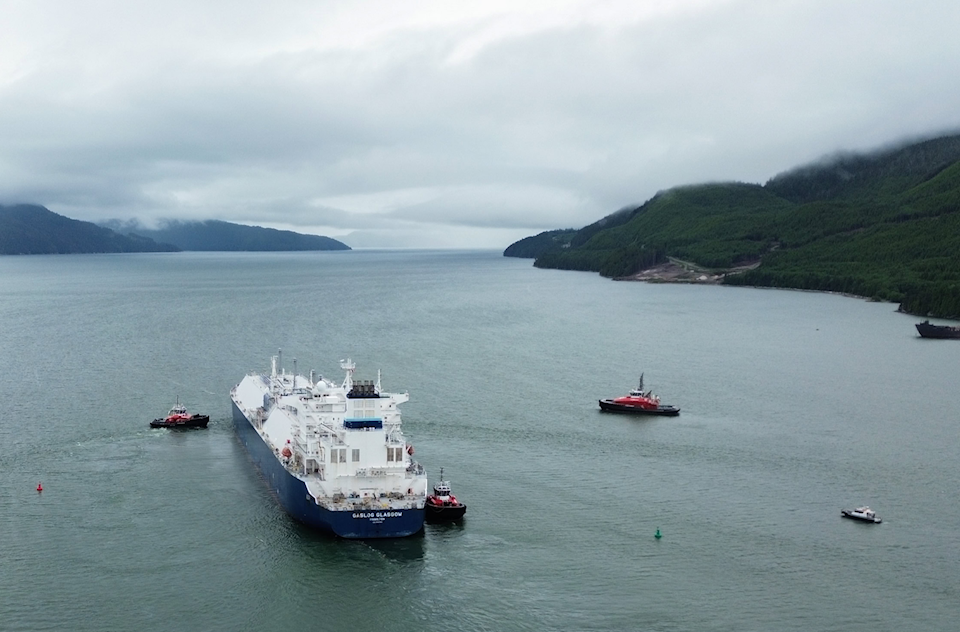Early activity at LNG Canada’s Kitimat terminal is proceeding through expected startup phases, the company says, despite news reports highlighting technical issues and a diverted LNG tanker.
“We have now loaded four LNG carriers, with a fifth carrier departing in the coming days. Our pace of progress will increase as we continue to move through early operations and into a steady shipping cadence. In regular operations in Phase 1, we anticipate loading one export cargo from our facility every two days,” a spokesperson for LNG Canada told Black Press Media.
Reuters reported on July 30 that the plant’s Train 1 unit has experienced issues involving a gas turbine and a refrigerant production unit, according to unnamed industry sources. It also noted that the LNG tanker Ferrol Knutsen, which had signalled a course to Kitimat, diverted and is now off the coast of California en route to Peru.
“A new facility of the size and complexity of LNG Canada requires a break-in period to stabilize, which is normal in new LNG facilities,” the LNG Canada spokesperson said.
The company added it does not control shipping beyond its local waters.
“LNG carrier movements outside of our local shipping route (the 294 kilometres from the Triple Island Pilot Station to Kitimat) are not controlled by LNG Canada. Nor are cargo destinations. These are determined and directed by our five joint venture participants,” the spokesperson said.
LNG Canada is a joint venture between Shell, Malaysia’s Petronas, PetroChina, Japan’s Mitsubishi Corporation, and South Korea’s KOGAS.
The Reuter's report came out the same day B.C. Premier David Eby visited Kitimat to mark the first shipment of liquefied natural gas one month ago from the $40-billion LNG Canada terminal to Asia. Eby described the milestone as a historic moment for the province’s economy and clean-energy ambitions.
The premier’s visit piggybacked off a trip to Kitamaat Village, where he and Minister of Energy and Climate Solutions Adrian Dix announced a $200-million infrastructure package for the Haisla-majority-owned Cedar LNG project.
Both appearances underscored the provincial government’s support for the growing LNG sector and suggested momentum behind a potential Phase 2 expansion of LNG Canada. The Kitimat project, considered one of the largest private investments in Canadian history, holds a 40-year export licence and is expected to produce 14 million tonnes of LNG per year. If approved, Phase 2 would double that capacity. A final investment decision remains pending.



